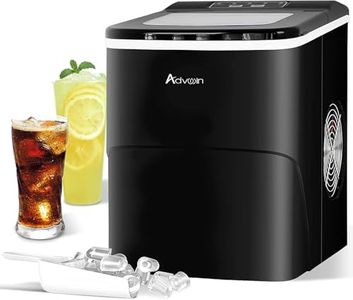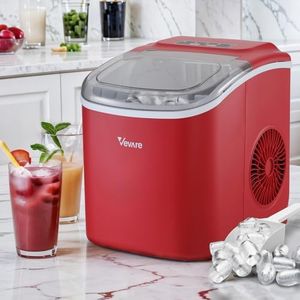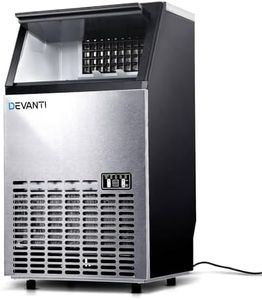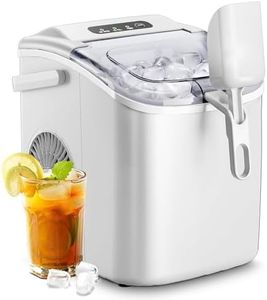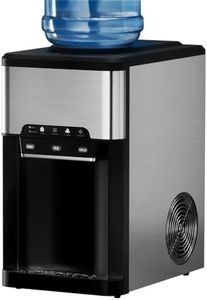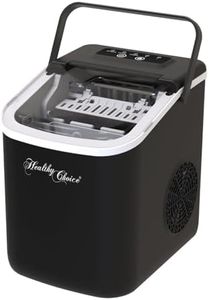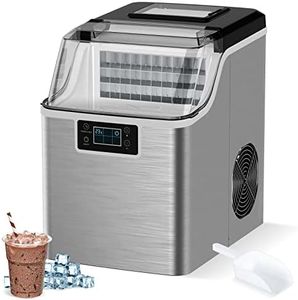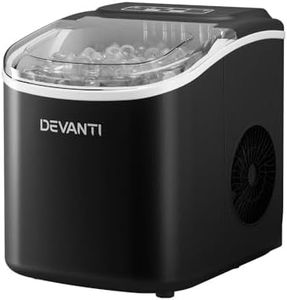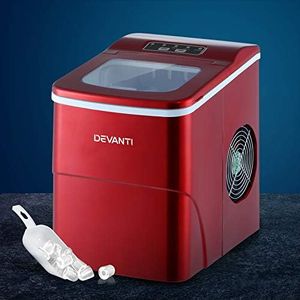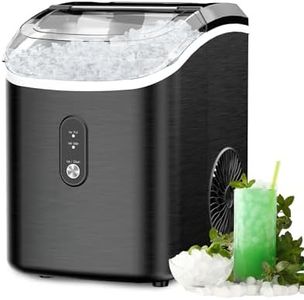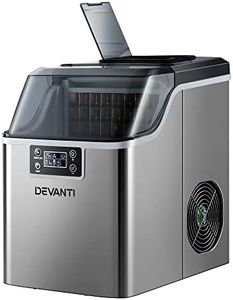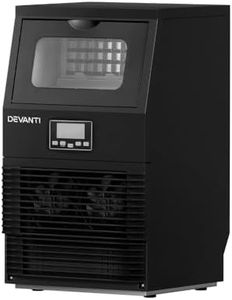We Use CookiesWe use cookies to enhance the security, performance,
functionality and for analytical and promotional activities. By continuing to browse this site you
are agreeing to our privacy policy
10 Best Ice Makers
From leading brands and best sellers available on the web.Buying Guide for the Best Ice Makers
Buying an ice maker can greatly improve convenience at home, parties, or even small business setups by providing a steady supply of ice without relying on freezer trays. Since there are various types and features available, it's important to understand your real needs—how much ice you want, how often you'll use it, where you'll place it, and what kind of ice you prefer. Thinking about these aspects first will help you narrow down the most suitable options and avoid features you won't use.Ice Production CapacityIce production capacity tells you how much ice the machine can produce in a 24-hour period. This is crucial because it determines if the ice maker can keep up with your usage, especially if you host gatherings or use ice frequently. Small units typically make around 20–30 pounds per day, suitable for families or occasional events. Medium capacity, around 30–50 pounds, is good for regular home use or small offices. Larger models can produce over 50 pounds per day and are best for big events or heavy use. Choose a model that matches your daily ice needs. If you often run out of ice with ice cube trays, aim for a higher capacity model.
Ice Storage CapacityThis refers to how much ice the machine can hold at one time before you need to remove some or the machine stops making more. It's important because a high production rate isn't useful if the storage is too small and the ice melts before use. Smaller ice makers may store 1–2 pounds, mid-sized units hold 2–4 pounds, while larger units can store 5 pounds or more. Pick a storage capacity that fits your serving style; if you need to serve several people at once, a bigger storage bin will help.
Type and Shape of IceIce makers can produce different shapes of ice cubes—bullet, nugget, cube, or even crescent. The ice type affects melting speed, chewability, and the look in your drinks. Bullet ice (soft and fast-melting) is common for quick chilling, nugget ice (soft, chewable) is popular for drinks and snacking, while clear cubes look elegant and melt slowly. Think about what you prefer in your beverages and choose a maker producing that type of ice for the best experience.
Speed of Ice MakingSpeed refers to how quickly the first batch of ice is ready and the time between batches. This matters if you need ice fast for guests or regular use. Fast models can produce ice in 6–10 minutes per batch, while others may take longer. If you don't mind a short wait or plan in advance, slower machines are fine, but if you want immediate results, prioritize a faster-making ice maker.
Size and PortabilityThe physical size, weight, and portability of the ice maker matter, especially if your counter space is tight or you want to use it in different locations. Compact models are easier to move and store, ideal for small kitchens or travel, while larger units may need a dedicated spot. Consider where you'll use the machine most and pick the size that fits comfortably in your space.
Ease of Use and MaintenanceFeatures like digital controls, clear indicators, and easy access to water and ice make the ice maker more user-friendly. Some also include self-cleaning or easy-drain options, which help keep the machine hygienic and low-maintenance. If you want hassle-free operation, look for models that highlight convenience and simple maintenance routines.


